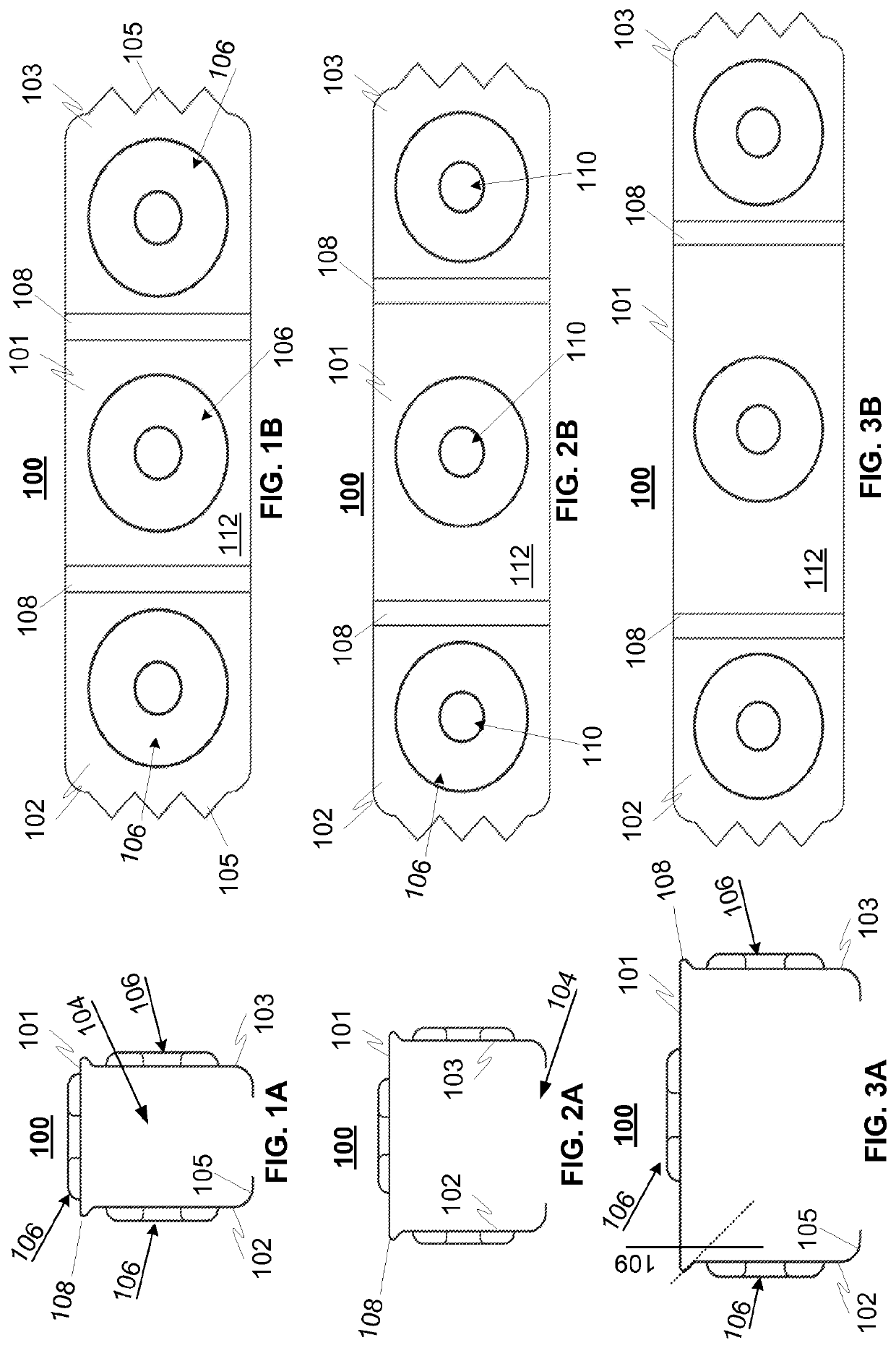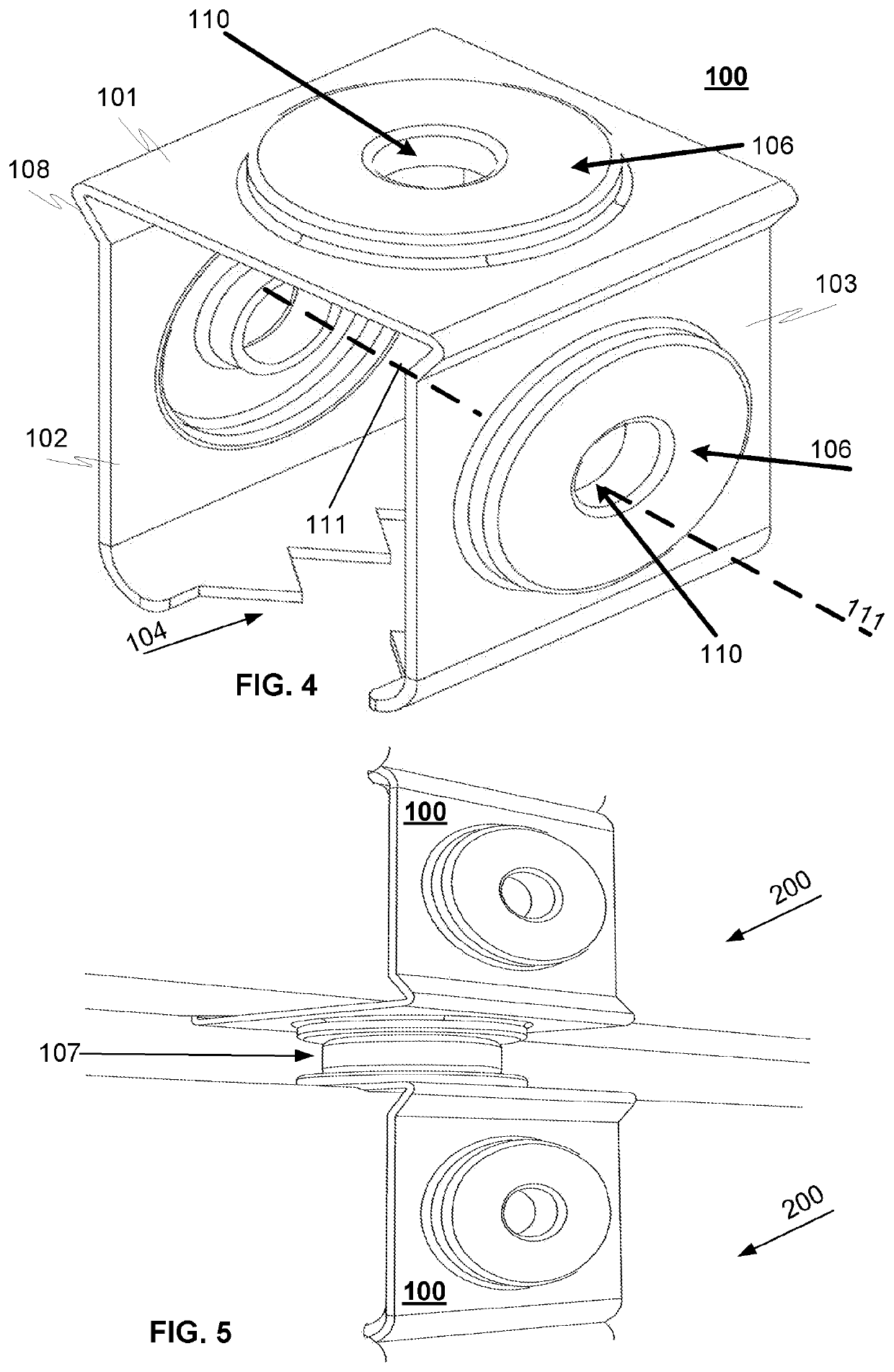Fastening device for fastening elements
a technology of fastening device and fastening element, which is applied in the direction of ceilings, fastening means, mechanical apparatus, etc., can solve the problems of time-consuming and labor-intensive fastening operation, visual defects and drawbacks, and the prior art's fastening solution is not known. to achieve the effect of fastening the element and easy operation
- Summary
- Abstract
- Description
- Claims
- Application Information
AI Technical Summary
Benefits of technology
Problems solved by technology
Method used
Image
Examples
Embodiment Construction
[0025]FIGS. 1A-3B and 4 illustrate a principle of exemplary devices 100 of different sizes for fastening elements 200, and FIG. 5 an example of devices used for fastening elements to each other according to an advantageous embodiment of the invention. The fastening device 100 comprises a planar top portion 101 and two side portions 102, 103, which are coupled with said planar portion at one end via an angle portion 108. The side portions form a receiving opening 104 for receiving the element 200 between the side portions, as is described elsewhere in this document. The angle portion 108 is advantageously inclined to extending towards the opening 104 and intersecting a normal 109 of said top planar portion at least in the end portion of said planar portion, as can be seen in FIG. 3A.
[0026]The side portions both comprise at least one or more tooth / teeth 105, which are inclined towards the opening 104 and the element 200 when the device is in use.
[0027]The top planar and side portions ...
PUM
 Login to View More
Login to View More Abstract
Description
Claims
Application Information
 Login to View More
Login to View More - R&D
- Intellectual Property
- Life Sciences
- Materials
- Tech Scout
- Unparalleled Data Quality
- Higher Quality Content
- 60% Fewer Hallucinations
Browse by: Latest US Patents, China's latest patents, Technical Efficacy Thesaurus, Application Domain, Technology Topic, Popular Technical Reports.
© 2025 PatSnap. All rights reserved.Legal|Privacy policy|Modern Slavery Act Transparency Statement|Sitemap|About US| Contact US: help@patsnap.com


